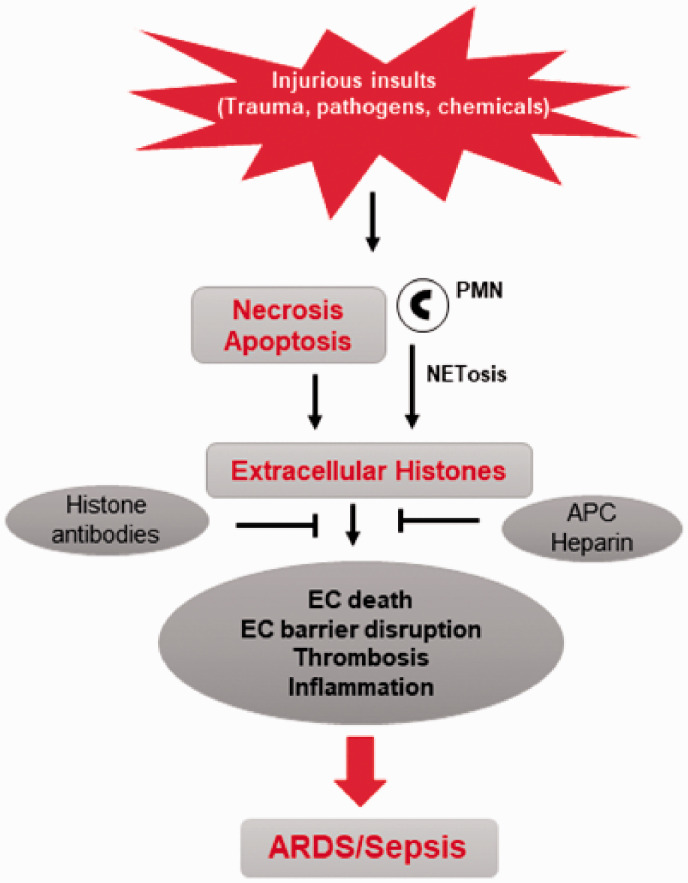Fig. 1.
Mechanisms of histone release and its role in induction of ARDS. Injurious insults such as trauma and bacterial/viral pathogens induce the release of histones to the extracellular space as result of apoptosis, NETosis, or necrotic cell death. Histones released into circulation contribute to severity of ARDS/sepsis by various mechanisms, including direct endothelial cell death, coagulation, thrombosis, and production of inflammatory cytokines. Histone-blocking antibodies and other histone-neutralizing molecules, such as APC and heparin that bind or degrade histones, inhibit their cytotoxic effects and promote tissue recovery.
EC: endothelial cell; PMN: polymorphonuclear leukocytes; NET: neutrophil extracellular traps; APC: activated protein C; ARDS: acute respiratory distress syndrome.

